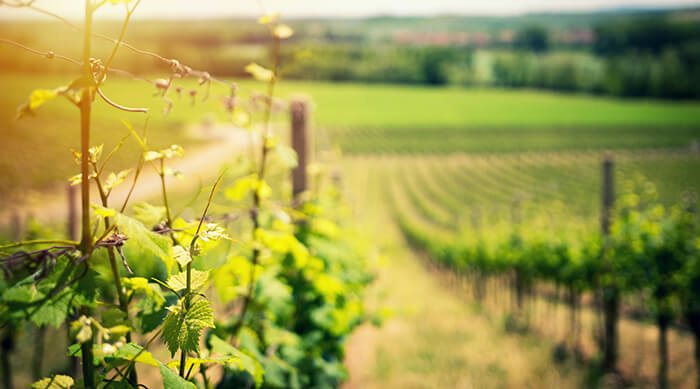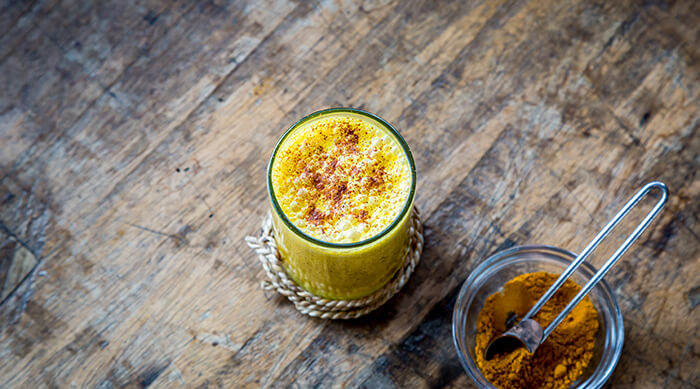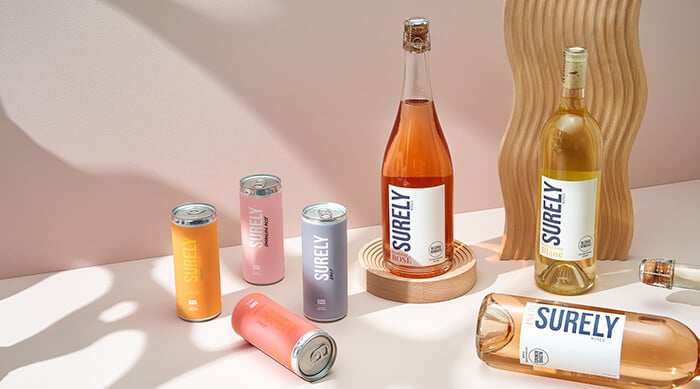Biodynamic wine is the most natural and chemical-free process of winemaking. Like organic wine, biodynamic wine is made without synthetic pesticides or fertilizers. Biodynamic farmers take it a step further by using phases of the sun and moon to prune and harvest their vineyards.
What is biodynamic agriculture? Biodynamic agriculture is a type of farming that treats the farm — or, in this case, the vineyard — as a living organism. Biodynamic winemakers cultivate their vines using all-natural soil management and fertilization techniques and planting calendars.
The main goal is to work with the natural environment rather than against it, even if it means embracing some of the quirkier aspects of biodynamic farming — we’ll get into that later.
Today, there are hundreds of biodynamic wineries worldwide, from Europe to Australia to the United States. Winemakers in the biodynamic movement claim it’s the most sustainable type of wine out there.
What is the difference between biodynamic wine and natural wine? Natural wine is made without adding or subtracting anything in the cellar — no additives, no chemicals, no sulfur, no oak character from barrels, no filtering, and no cultured yeast. Natural winemaking is also known as “low-intervention” and can be highly unpredictable regarding the quality of the wine.
Table of Contents
Biodynamic vs. Organic Wine
What’s the difference between organic and biodynamic wine? Biodynamic wines are similar to organic wines but have gone several steps further to create a fertile ecosystem around the vineyard. Organic wines and biodynamic wines are both made without pesticides.
Simply put, all biodynamic wine is organic, but not all organic wine is biodynamic.
Both biodynamic and organic grapes are pesticide-free. The wines are bottled without the additives, and preservatives used by some winemakers to improve the shelf life or adjust the flavor of their wines.
From there, the 2 differ regarding the natural environment or terroir, and the emphasis biodynamic winemakers place on their connection with the earth.
A History of Biodynamic Vineyards
Biodynamic farming came onto the scene in the 1920s with an Austrian philosopher and occultist named Rudolf Steiner. Steiner was interested in blending science with spirituality and viewed the farm ecosystem as a living, breathing organism.
Steiner’s lectures were assembled in a book called The Agriculture Course. Today, it’s the essential text for farmers seeking a how-to guide in biodynamic farming.
Nicolas Joy was one of the first converts into the world of wine production and has bottled biodynamic wine since the 1980s. He won’t call even himself a winemaker, preferring the title of “nature’s assistant.”
Many researchers describe biodynamic farming as wishful thinking lacking enough science-backed proof that it's better than organic farming. Some even call it pseudoscience, pointing out that Steiner wasn’t a scientist by trade.
Others suggest that it’s the most sustainable winemaking practice out there and better for the environment than even strict organic winemaking, but biodynamic winemakers disagree.
Biodynamic Practices
Some biodynamic practices mirror organic, low-intervention, and natural wine farming methods, specifically when it comes to their grapes.
Biodynamic producers avoid chemicals like pesticides, herbicides, and additives like commercial yeast on their vines and fermentation. While sulfites naturally occur in wines, these wines won’t have added sulfites or added sugars.
Instead of chemicals, biodynamic winegrowers rely on special composts and sprays made with plants and manure from animals raised onsite. Sometimes chickens help out with pest control, too.
Biodynamic practices start before a single grape is grown, though. Everything from planting to harvesting is dictated by the biodynamic calendar.
Maria Thun, a life-long advocate for biodynamic farming, is credited with creating an accessible calendar for farmers to follow based on Steiner's principles.
Thun's calendar is divided into 4 distinct days that correspond to the typical tasks performed at the vineyard:
- Fruit Days: These are fire sign days. Wait for Fruit Days to harvest your grapes.
- Root Days: The moon travels through the earth signs. These are great for pruning.
- Flower Days: These correspond to air signs. Take a rest on Flower Days.
- Leaf Days: The moon travels through the water signs. These are good watering days.
These days also describe ideal wine-drinking times for the consumer. Biodynamic tasting rooms schedule events around these suggestions. Fruit and flower days are the best days for wine drinking.

The most intriguing part of biodynamic wine growing may not have to do with the moon at all but rather with the cow horn.
The Cow Horn
One of the most talked-about farming practices in biodynamic viticulture is the cow horn, a fertilizing tool that may give vegan wine fans pause.
The biodynamic winemaking process requires a special kind of compost known as “500” or “preparation 500.” Cow horns stuffed with manure are buried for several months in the fall with a variety of plants, including chamomile, dandelion, and stinging nettles.
By spring, farmers dig up the holes, make a tea out of the compost, and use it as natural fertilizer.
The manure isn’t just any old cow pie, either. It has to have the right kind of moisture that isn’t too wet or too dry and come from a lactating cow.
The origins of the cow horn as the vessel for this key piece of biodynamic farming aren’t clear. Animal horns in general are symbols of bounty and the practice is essential to biodynamic farming.
About the Wine
Biodynamic wine enthusiasts and fans of functional wines like knowing what they’re sipping is a more sustainable choice. Newbies to biodynamic wine might have some questions, and we’re here with answers.
What Does Biodynamic Wine Taste Like?
Biodynamic wine doesn’t have one unique flavor profile. While some natural wines can taste a little funky, a biodynamic wine may resemble the traditional wines you’re used to drinking.
Does biodynamic wine taste different? Biodynamic wines do generally have a better flavor profile. However, since it lacks the additives some winemakers use to adjust the taste, it can be more difficult to maintain a consistent flavor profile.
Some also describe biodynamic wine as more expressive, but that’s a fairly subjective measure on taste.
Biodynamic Wine & Your Health
Is biodynamic wine healthier? Biodynamic wine may be healthier if you generally consider organic products to be better for you than others.
You could make the argument that a pesticide-free wine is a healthier than wines that use chemicals in their vineyards. Outside of chemical use, there isn’t research to show that products grown on a biodynamic planting calendar are any better for you than others.
If we’re talking about wine in general, red wine is thought to be healthier than white thanks to its resveratrol content. Red wine is also acceptable for those on the Paleo diet, although it isn’t strictly paleo.
Whether you’re drinking a conventional wine or a biodynamic option, you can’t avoid a hangover either way. Drinking less wine or sipping on a non-alcoholic option is a good strategy for that!
Finding Biodynamic Wine
Biodynamic wines are becoming more common in shops wherever wines are sold, but you’ll need to be a bit of a sleuth to determine if the bottle you’re eyeing is biodynamic. In the United States, seek out wines that are Demeter-certified.
How can you tell if wine is biodynamic? You can tell a wine is biodynamic by their certification label. There are biodynamic certified estates and biodynamic certified wines. Just check the label!
Biodynamic wines must be certified by either Demeter International or Biodyvin. Demeter Association, Inc., is the governing body handling biodynamic certification in the United States.
Scribe Winery in Sonoma and Cooper Mountain Vineyards in Oregon’s Willamette Valley are two vineyards in the U.S. where you’d find sommeliers pouring biodynamic wines. Domaine Michel Magnien in the Burgundy region of France is a well-known European producer.
Should you switch to biodynamic wine?
While biodynamic winemaking practices are great for the environment, there’s no hard evidence that it’s better for your health. If eco-conscious shopping is your thing, it’s worth getting to know some biodynamic brands.
At Surely, we’re all about trying new wines. Most wines, in moderation, are just fine. Some are also more eco-friendly than others.
If your healthy lifestyle is more about cutting back on drinking, we’re here for it. From non-alcoholic sparkling rosé to our non-alcoholic bubbly pinot noir, our wines make the perfect pairings for nights when you want real wine without the alcohol.
Sources
- Ernst Haeckel's biodynamics 1866 and the occult basis of organic farming
- Organic Winemaking and Its Subsets; Biodynamic, Natural, and Clean Wine in California
- Comparative life cycle assessment in the wine sector: biodynamic vs. conventional viticulture activities in NW Spain
- Natural and sustainable wine: a review




![Healthy Drink Brands to Try Today [Tea, Soda Swaps & More]](https://dropinblog.net/cdn-cgi/image/fit=scale-down,width=700/34240221/files/featured/Healthy_Drink_Brands.jpg)